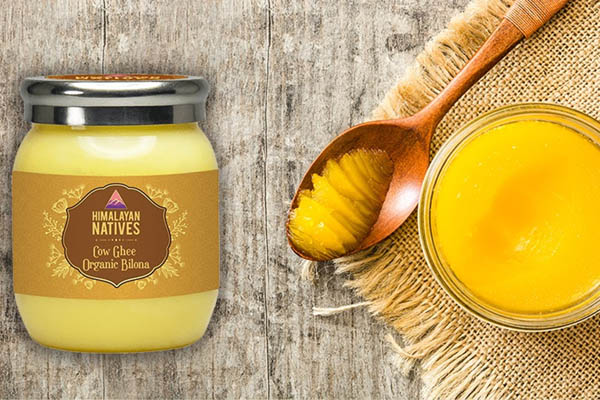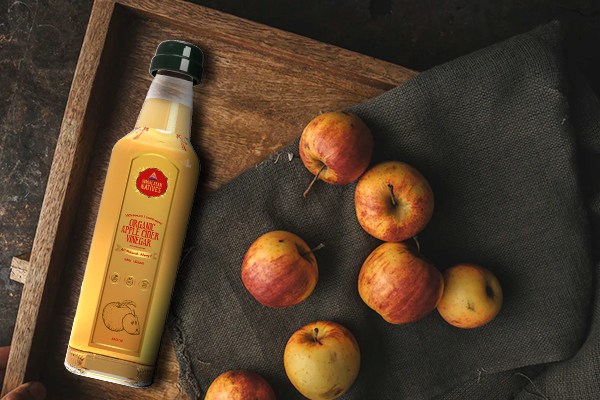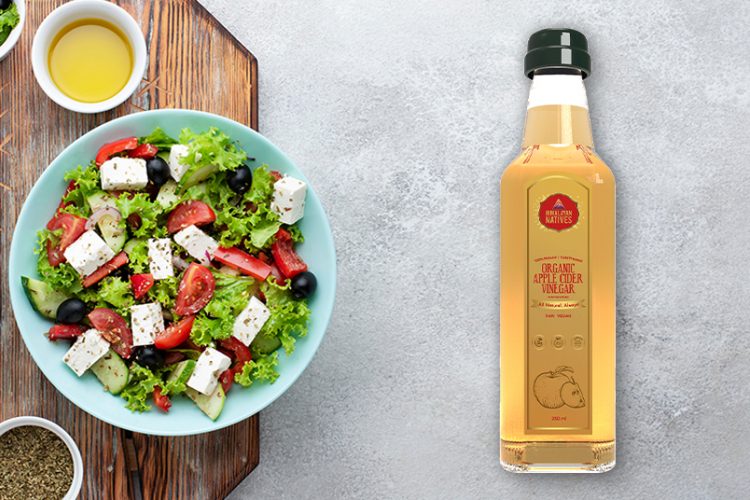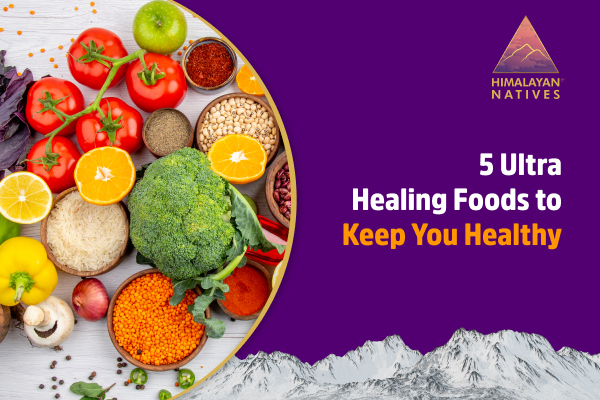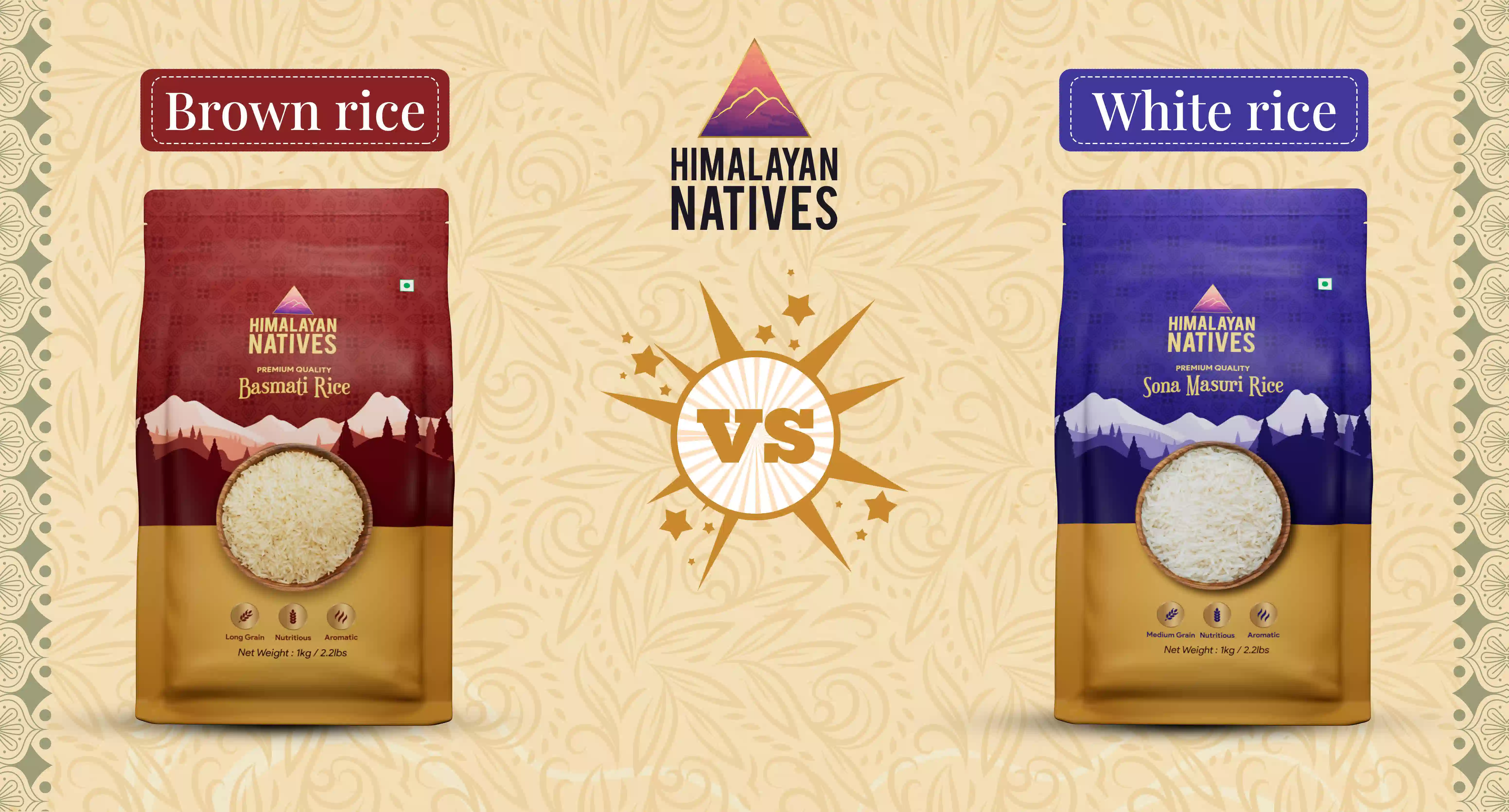
Did you know there are around 7000 varieties of rice with several colours, shapes and sizes? The most common of them are white and brown rice. Although it is said that brown rice surpasses white rice in nutrition, the consumption of white rice is much higher than brown rice. These rice grains contribute to approximately 20% of the world’s calorie intake, which simply makes it one of the most important foods on earth. No wonder why Rice is one of the most loved and consumed food across the world and especially in South Asia. Not only this, but almost 4 billion people consume rice as a daily staple of their diet.
To suffice this ever-growing demand, different varieties of rice are farmed and grown in a palette of colours by farmers across the world. Thankfully for us, the choice gets narrowed down to just two options for now: brown rice or white rice.
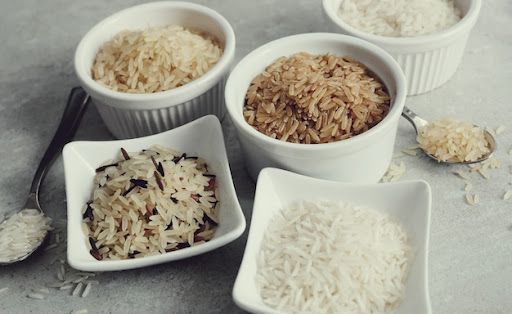
Rice is typically a whole grain with a rich source of nutritional and dietary benefits. And as we talked about the popularity of brown rice benefits and nutrition, there might arise a debate around which rice grain to choose for a healthier diet. Continue reading further to settle this never-ending debate and help choose the best for you.
You can imagine why people love it and how rich rice is in nutrition and calories, with this awesome quote by Sir Mitch Hedberg that goes like: “Rice is great if you’re really hungry and want to eat two thousand of something”.
What is the difference between Brown Rice & White Rice?
The base question that needs to be answered and understood when given a choice of both rice grains is, what is the basic difference between them? The majority of consumers believe brown rice has more health benefits. However, it might not be as black-and-white as it seems. To start with, primarily all rice consists of carbs, protein and little or no fat.
Premium Sona Masoori Brown rice: Brown rice is unprocessed and all three parts namely the bran, germ and endosperm are kept intact, making it whole-grain rice. The intact germ and bran contribute to the nutrient quantity of brown rice, which lacks in white rice. The bran and germ also include several B-vitamins, iron, phosphorous, potassium and zinc
It also makes the brown rice grain thicker and shorter in shape and size. And due to its tough bran exterior, it’s chewy and takes a little longer than white rice to cook. This also makes brown rice take longer than white rice to digest and makes you feel full.
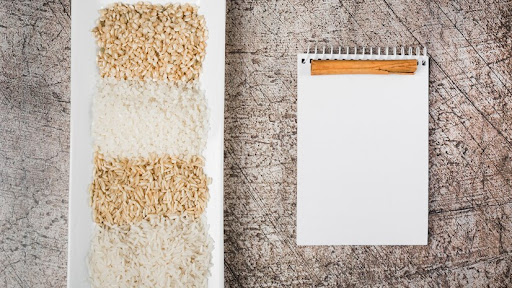
On the other hand, we have,
Premium Sona Masoori White Rice: This is processed naturally and the bran is removed from the rice grains. This is why there is a difference between brown and white rice protein & nutrition, as bran and germ are the most nutritious parts of the grain. Although B vitamins and iron are added back to white rice which basically directs to the word enriched.
After processing the grain is left with the starchy endosperm, white colour, and a thinner and longer shape. In addition, this makes the white rice softer and quicker to cook and digest than brown rice.
Let’s break this down and have a clear look at the nutrition facts for 1 cup of these cooked natural rice grains:
- Brown Rice Calories: 216
- White Rice Calories: 205
- Brown Rice Protein: 5.0 g
- White Rice Protein: 4.2 g
- Brown Rice Nutrition: 44.8g Carbs, 3.5g Fibre
- White Rice Nutrition: 44.5g Carbs, 0.6g Fibre
Clearly, brown rice has more calories, protein, fibre and even fat. It also possesses an earthy flavour as compared to white rice.
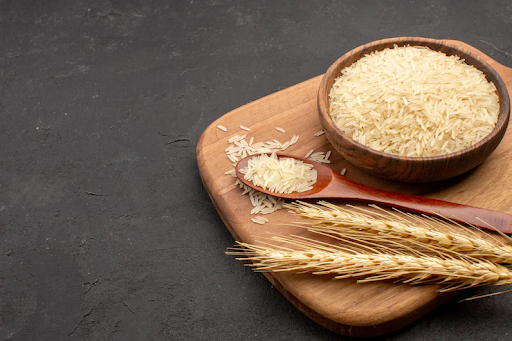
Himalayan Natives believe in providing 100% Natural and freshly farmed quality food products at reasonable prices for healthy food and diet seekers like yourself. This is why we bring you handpicked, tested and unadulterated natural food products from nature right at your doorstep.
Can you use white and brown rice interchangeably?
The answer is yes, of course. Both are highly nutritious staple foods, the starchy endosperm left behind in white rice contains key minerals such as magnesium and iron. Both are very easily digestible and light on the tummy. This comes in handy for individuals with a sensitive digestive system.
Now, brown rice is chewier and has a nuttier texture than white rice. You can use it as the base of a salad, fried rice or stir-fry. But you must know and keep in mind the cooking time and liquid content for both the rice grains.
Is it Okay to Eat Brown Rice every day?
Although Brown rice is filled with nutrition and several health benefits, one thing to be noted is that every rice grain has arsenic content. In general, you can consume 1-3 cups of rice every day. Also, keep a count of the calories you are consuming daily to help manage weight and accordingly consume rice.
Is White Rice unhealthy?
It is a common perception amongst many people about white rice as an “empty” or “bad” carb since it loses nutrients when the bran and germ are removed. However, white rice is usually enriched with added nutrients such as iron and Vitamin Bs. So while brown rice does have more nutrients than white rice, white rice can still be considered nutritious.
While you are at it, do not forget to binge-watch our Instagram post for more fun and exciting healthy tips.
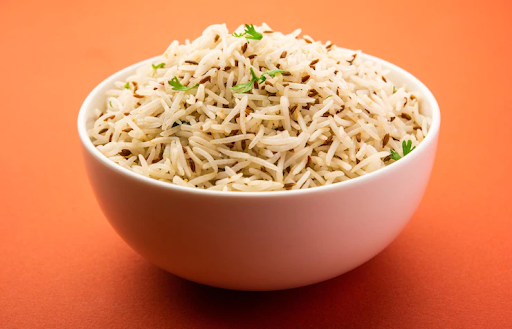
Summary:
As discussed earlier in the blog, brown rice has a slight edge over white rice in nutrition, they're both nutritious foods. While white rice and brown rice are high in starch, brown rice contains more fibre, nutrients, and antioxidants. For a balanced meal with white rice, you can add legumes and vegetables to make up for the excess starch or the nutritive value of brown rice.
That said, there’s no doubt that both types of rice can be part of a healthy diet, proven by the history of usage and consumption of white rice in the traditional cuisine of many cultures. Brown rice may have a more favourable nutrition profile, but there’s nothing wrong with having white rice as a part of a balanced diet.
We hope you found this blog helpful and that it answered most of your doubts regarding both rice grains. If you wish to read more such insightful content, have a look at this blog: Eat Right For A Healthy Life.
 HELPFUL0 people found it helpful
HELPFUL0 people found it helpful
Related Blogs
Subscribe to Our Blogs
and never miss on the latest update!







